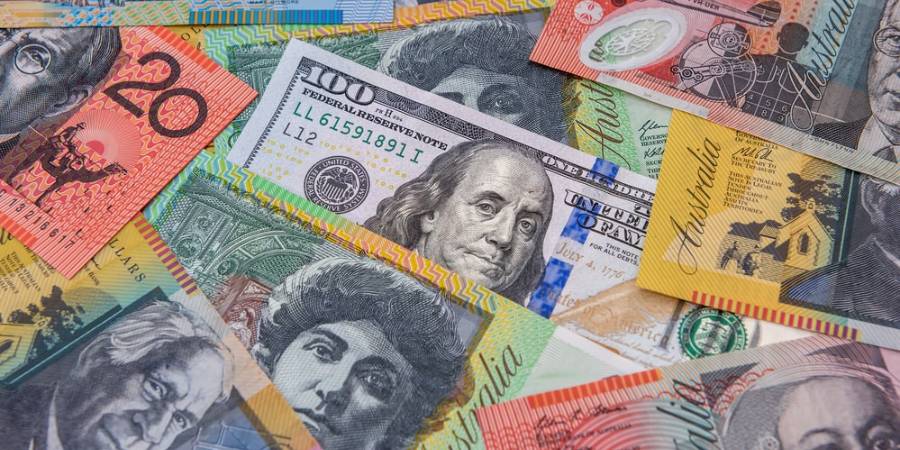Australian Dollar appreciates amid hawkish RBA ahead of policy decision

■The Australian Dollar rises due to the hawkish sentiment surrounding the RBA’s policy decision.
■The Australian central bank is anticipated to keep the cash rate unchanged at 4.35% during its May meeting later today.
■The US Dollar remains subdued due to a prevalent risk appetite, fueled by expectations regarding rate cuts by the Fed.
The Australian Dollar (AUD) continued its winning streak for the fifth consecutive session on Tuesday, driven by a hawkish sentiment surrounding the Reserve Bank of Australia (RBA). This positive outlook reinforces the strength of the Aussie Dollar, offering support to the AUD/USD pair.
The Australian central bank is widely expected to maintain the cash rate at 4.35% in its May meeting later in the day. However, markets are speculating that it may adopt a more hawkish stance, fueled by last week's inflation data, which exceeded expectations, according to The Australian Financial Review.
The US Dollar Index (DXY), which gauges the performance of the US Dollar (USD) against six major currencies, continues to face pressure following the release of softer US labor data on Friday. This development has reignited hopes for potential interest rate cuts by the Federal Reserve (Fed) in 2024.
Daily Digest Market Movers: Australian Dollar extends gains due to improved risk appetite
According to a report by Bloomberg, Richmond Federal Reserve (Fed) President Thomas Barkin said on Monday that elevated interest rates will further dampen US economic growth and help alleviate inflation pressures, bringing them closer to the central bank's 2% target. Barkin also noted that the solid labor market allows the Fed the opportunity to ensure that inflation is consistently trending lower before considering reductions in borrowing costs. However, he cautioned that continued inflation in the housing and services sectors poses a risk of keeping price increases elevated.
TD Securities Inflation (YoY) released by The University of Melbourne, came down to 3.7% in April, from the previous month’s 3.8%. In the meantime, the monthly rate remained at 0.1%.
China's Caixin Services Purchasing Managers' Index (PMI) for April dipped slightly to 52.5 from 52.7 in March, in line with expectations. Nonetheless, it signifies the 16th consecutive month of expansion in services activity. This positive trend has the potential to uplift Australia's market, given its significant role as one of the largest exporters to China.
On Friday, Nonfarm Payrolls showed that the US economy added 175,000 jobs in April, lower than the estimated 243,000 and signaling a significant slowdown from March's addition of 315,000 jobs.
The Judo Bank Australia Composite Purchasing Managers Index (PMI) declined in April, indicating a slightly slower growth in Australian private sector output. The growth in business activity was mainly confined to the service sector while manufacturing output continued to decrease.
According to forecasts by analysts at Commonwealth Bank and Westpac, the RBA’s interest rate is expected to peak at its highest point at 4.35% in November 2023, then decrease to 3.10% by December 2025.
Australia’s central bank is expected to maintain its key policy rate at 4.35% for a fourth consecutive meeting on Tuesday, and likely until the end of September, as per a Reuters poll of economists. These economists predict only one interest rate cut this year.
Technical Analysis: Australian Dollar could test the triangle’s upper boundary near 0.6650
The Australian Dollar trades around 0.6630 on Tuesday. The pair consolidates within a symmetrical triangle pattern, with the 14-day Relative Strength Index (RSI) above the 50-level, suggesting a bullish bias.
The AUD/USD pair could potentially retest the upper boundary near the major support level of 0.6650. A breakthrough above this level might prompt the pair to revisit March’s high of 0.6667, followed by the psychological level of 0.6700.
On the downside, the AUD/USD pair may encounter immediate support at the psychological level of 0.6600, followed by the nine-day Exponential Moving Average (EMA) at 0.6569. If the pair breaks below the EMA, it could face further pressure, testing the throwback support at the 0.6480 level. Subsequently, the lower boundary of the symmetrical triangle around the level of 0.6465 may serve as another support level.
AUD/USD: Daily Chart

Australian Dollar price today
The table below shows the percentage change of the Australian Dollar (AUD) against listed major currencies today. The Australian Dollar was the strongest against the Japanese Yen.
|
USD |
EUR |
GBP |
CAD |
AUD |
JPY |
NZD |
CHF |
USD |
|
0.02% |
0.03% |
0.05% |
0.03% |
0.14% |
0.02% |
0.06% |
EUR |
-0.02% |
|
0.00% |
0.03% |
0.03% |
0.13% |
0.00% |
0.07% |
GBP |
-0.03% |
0.00% |
|
0.02% |
0.03% |
0.13% |
0.00% |
0.06% |
CAD |
-0.05% |
-0.03% |
-0.02% |
|
0.01% |
0.11% |
-0.02% |
0.03% |
AUD |
-0.03% |
-0.03% |
-0.03% |
-0.01% |
|
0.11% |
-0.03% |
0.03% |
JPY |
-0.14% |
-0.13% |
-0.12% |
-0.11% |
-0.13% |
|
-0.10% |
-0.06% |
NZD |
-0.01% |
0.00% |
0.00% |
0.02% |
0.03% |
0.13% |
|
0.06% |
CHF |
-0.08% |
-0.07% |
-0.06% |
-0.04% |
-0.03% |
0.05% |
-0.06% |
|
The heat map shows percentage changes of major currencies against each other. The base currency is picked from the left column, while the quote currency is picked from the top row. For example, if you pick the Euro from the left column and move along the horizontal line to the Japanese Yen, the percentage change displayed in the box will represent EUR (base)/JPY (quote).
* The content presented above, whether from a third party or not, is considered as general advice only. This article should not be construed as containing investment advice, investment recommendations, an offer of or solicitation for any transactions in financial instruments.


